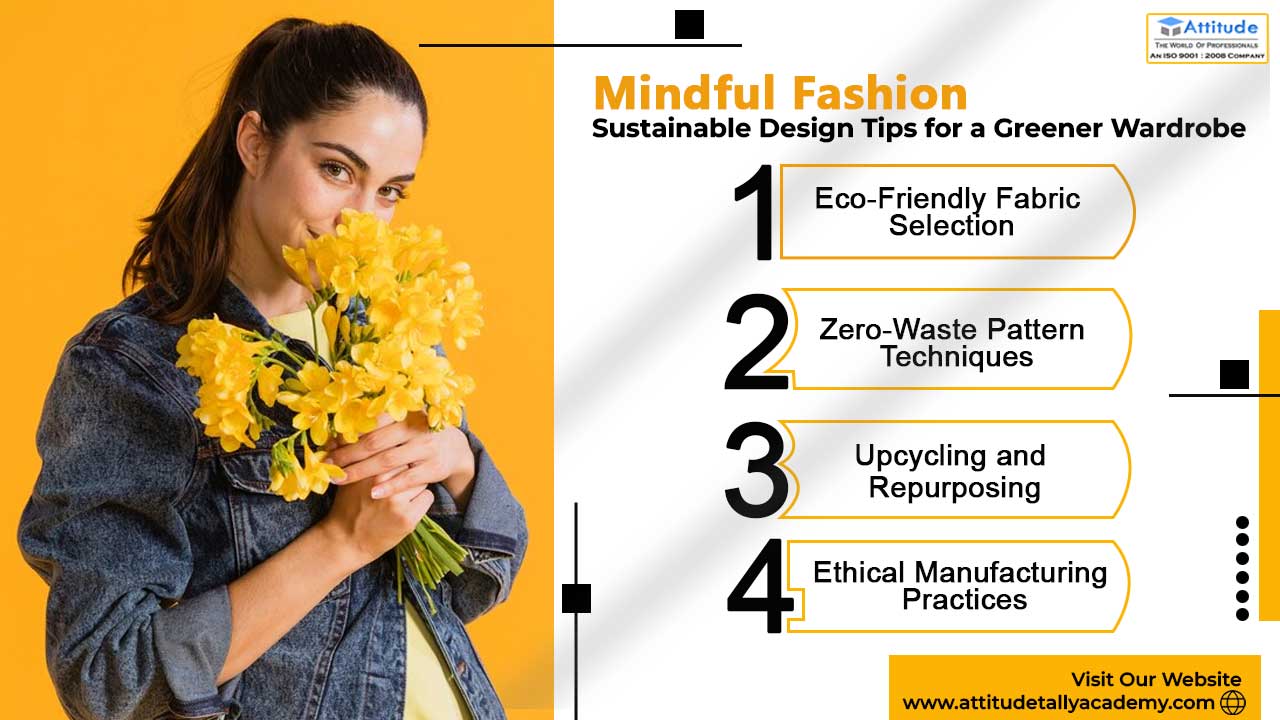Introduction:
In a world increasingly aware of the environmental impact of consumer choices, the fashion industry is undergoing a transformation towards sustainability. Mindful fashion, with its focus on eco-friendly practices, has emerged as a conscientious choice for those seeking to reduce their ecological footprint. This blog delves into key sustainable design tips for creating a greener wardrobe, exploring eco-friendly fabric selection, zero-waste pattern techniques, upcycling and repurposing, and ethical manufacturing practices.
Eco-Friendly Fabric Selection: Choosing the right fabric is a pivotal step in creating sustainable fashion. Opting for eco-friendly materials can significantly reduce the environmental impact of clothing production. Organic cotton, hemp, Tencel, and bamboo are some examples of fabrics that have a lower ecological footprint compared to conventional materials. These fabrics often require fewer pesticides, less water, and have a smaller carbon footprint.
Zero-Waste Pattern Techniques: Traditional pattern-making often results in significant fabric waste. Embracing zero-waste pattern techniques is a crucial aspect of sustainable fashion design. Designers can achieve this by strategically arranging pattern pieces to utilize the entire fabric, leaving little to no waste. Techniques like “nesting” and “draping” can be employed to optimize the use of materials, contributing to a more environmentally friendly design process.
Upcycling and Repurposing: One of the most creative and sustainable approaches to fashion design is upcycling and repurposing existing materials. Instead of discarding old or unused clothing, designers can breathe new life into them by transforming them into fresh, stylish pieces. This not only reduces textile waste but also adds a unique touch to the fashion item, making it a one-of-a-kind statement piece.
Ethical Manufacturing Practices: Sustainable fashion extends beyond materials and design; it encompasses ethical manufacturing practices as well. Selecting manufacturers with fair labor practices, safe working conditions, and a commitment to reducing environmental impact is essential. Transparent supply chains, fair wages, and responsible production processes contribute to the overall sustainability of the fashion industry.
Conclusion: Mindful fashion is a conscious choice that aligns personal style with environmental responsibility. By incorporating eco-friendly fabric selection, zero-waste pattern techniques, upcycling and repurposing, and ethical manufacturing practices, designers and consumers alike can contribute to a greener and more sustainable future. As the fashion industry continues to evolve, embracing these principles will play a pivotal role in shaping a more eco-conscious wardrobe that not only looks good but also does good for the planet.




